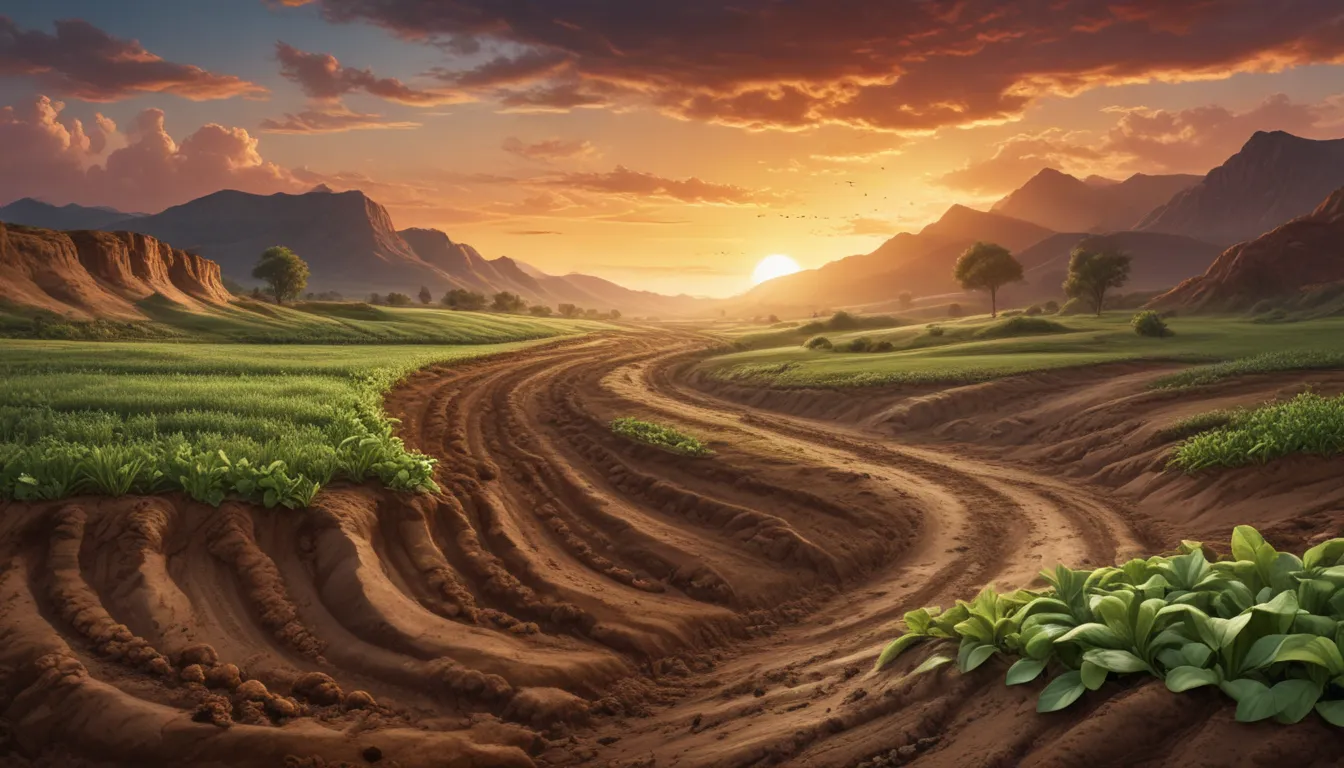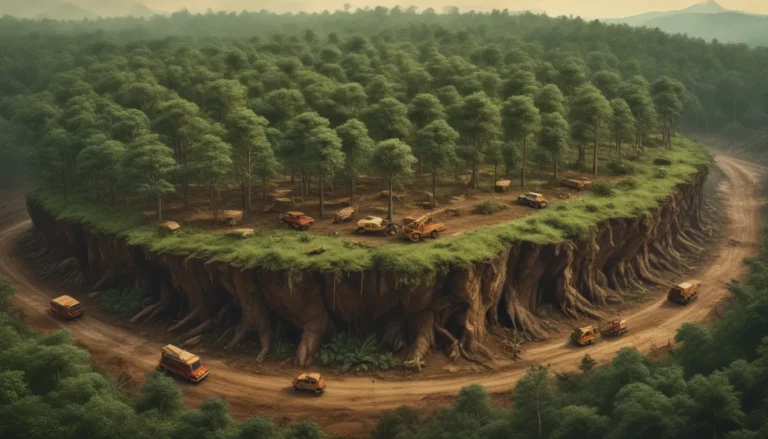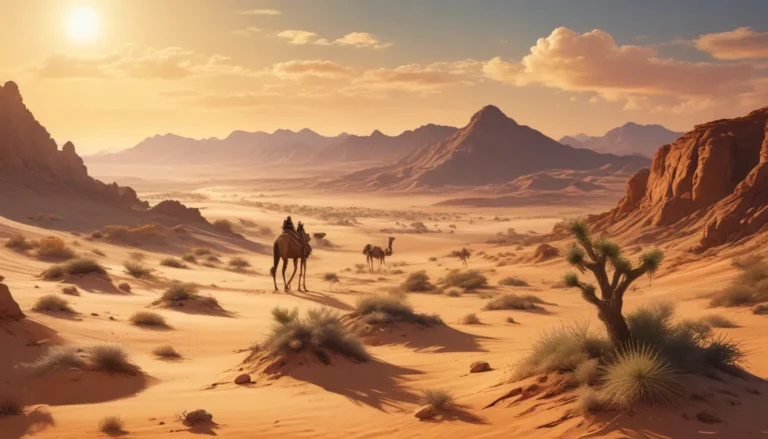A Note About Images: The images used in our articles are for illustration purposes only and may not exactly match the content. They are meant to engage readers, but the text should be relied upon for accurate information.
Welcome to the ultimate guide to soil conservation, where we delve into the fascinating world of preserving our precious soil resources for a greener and more sustainable planet. Soil conservation is not just a practice; it’s a way of life that ensures the health and productivity of our soils for future generations. With the growing concern for environmental issues and the need for sustainable agricultural practices, understanding and implementing soil conservation techniques have never been more critical. In this comprehensive guide, we will explore key facts and techniques that will deepen your understanding of soil conservation and inspire you to take action. Let’s embark on this journey together to uncover the secrets of soil conservation and pave the way for a brighter tomorrow.
Unveiling the Enigmatic Facts of Soil Conservation:
Soil conservation is more than just preventing soil erosion; it’s about preserving the very essence of life beneath our feet. Let’s unveil some enigmatic facts that shed light on the significance of soil conservation and its far-reaching impacts:
-
Soil erosion is a major concern worldwide: Soil erosion poses a significant global issue that affects agricultural productivity, water quality, and ecosystem stability. Implementing proper soil conservation practices is paramount to mitigating erosion and preserving this valuable natural resource.
-
Deforestation accelerates soil erosion: The removal of forests exposes the soil to wind and water, leading to increased erosion rates. Preserving and restoring forests are crucial for maintaining healthy soil and preventing erosion.
-
Conservation tillage reduces soil erosion: Techniques like no-till or reduced tillage help minimize soil disturbance, protect soil structure, and reduce erosion. These practices also contribute to improved water infiltration and retention.
-
Crop rotation enhances soil fertility: Rotating crops breaks pest and disease cycles, balances soil nutrients, and reduces erosion. It also promotes soil microbial diversity, enhancing overall soil health and productivity.
-
Cover crops protect against soil erosion: Planting cover crops during fallow periods helps maintain soil cover, reduce erosion, and improve organic matter content. Cover crops also contribute to nutrient cycling and weed suppression.
-
Terracing prevents hillside erosion: Constructing terraces on steep slopes slows down water flow, allowing it to infiltrate the soil and preventing erosion. This technique is effective in reducing erosion on hilly terrains.
-
Agroforestry promotes sustainable soil management: Integrating trees with crops or livestock stabilizes soil, enhances nutrient cycling, and improves water infiltration. Agroforestry is a multi-benefit practice that contributes to effective soil conservation.
-
Windbreaks protect against wind erosion: Planting windbreaks reduces wind speed, prevents soil erosion, and protects crops from wind damage. These barriers create microclimates that benefit agricultural productivity.
-
Contour plowing minimizes soil erosion on slopes: Plowing along the contours of a slope reduces water runoff and enhances water infiltration, preventing soil erosion on sloping lands.
-
Soil erosion contributes to water pollution: Eroded soil particles and pollutants can enter water bodies, leading to sedimentation, decreased water quality, and harmful impacts on aquatic ecosystems. Soil conservation plays a crucial role in protecting water resources.
-
Improved irrigation practices reduce soil salinization: Efficient irrigation techniques like drip irrigation minimize water wastage and reduce the risk of soil salinization. Controlling irrigation practices is vital for preserving soil health.
-
Soil conservation is essential for climate change mitigation: Healthy soils store significant amounts of carbon dioxide, acting as carbon sinks. Implementing soil conservation practices can enhance carbon sequestration, mitigate climate change, and contribute to a more sustainable future.
Understanding the Importance of Soil Conservation Techniques:
In the realm of soil conservation, various techniques play a pivotal role in preserving soil health and sustainability. Let’s explore some key practices that are instrumental in safeguarding our precious soils:
-
Crop Rotation: Rotating crops helps maintain soil fertility, break pest cycles, and promote soil biodiversity. It’s a simple yet effective technique to enhance soil health and productivity.
-
Cover Cropping: Planting cover crops during fallow periods protects the soil, reduces erosion, and enhances organic matter content. It also contributes to nutrient cycling and weed suppression, improving overall soil quality.
-
Terracing: Constructing terraces on steep slopes helps prevent hillside erosion by slowing down water flow and allowing it to infiltrate the soil. This technique is essential for reducing erosion on sloping lands.
-
Conservation Tillage: No-till or reduced tillage practices minimize soil disturbance, protect soil structure, and reduce erosion. These techniques also enhance water infiltration and retention, contributing to improved soil health.
-
Agroforestry: Integrating trees with crops or livestock in agroforestry systems stabilizes soil, enhances nutrient cycling, and improves water infiltration. Trees play a crucial role in promoting sustainable soil management practices.
-
Windbreak Establishment: Planting windbreaks such as rows of trees or shrubs reduces wind speed, prevents soil erosion, and protects crops from wind damage. These barriers create microclimates that benefit agricultural productivity.
-
Contour Plowing: Plowing along the contours of a slope creates ridges and furrows that reduce water runoff and enhance water infiltration. This technique is effective in minimizing soil erosion on sloping lands.
Taking Action for a Greener Future:
As we unravel the mysteries of soil conservation and dive into the depths of sustainable agriculture practices, it’s essential to take action and contribute to the preservation of our valuable soil resources. Here are some ways you can actively engage in soil conservation efforts:
-
Practice responsible land management: Implement soil conservation techniques such as crop rotation, cover cropping, and terracing to protect the soil and enhance its fertility.
-
Avoid overuse of chemicals: Limit the use of synthetic fertilizers and pesticides that can harm soil health and contribute to pollution. Opt for organic and sustainable farming practices instead.
-
Support sustainable farming initiatives: Encourage and promote initiatives that promote sustainable agriculture practices, soil conservation, and environmental stewardship in your community.
-
Educate others: Spread awareness about the importance of soil conservation and its impact on the environment. Inspire others to join the cause and take steps towards sustainable soil management.
By embracing these actions and incorporating soil conservation practices into your daily life, you can contribute to a greener future and ensure the health and sustainability of our soils for generations to come.
Conclusion:
In conclusion, soil conservation is a cornerstone of sustainable agriculture and environmental stewardship. By understanding the significance of preserving our soil resources and implementing effective conservation techniques, we can protect the very foundation of life on earth. The enigmatic facts and techniques of soil conservation we’ve explored in this guide highlight the importance of taking proactive steps to safeguard our soils and promote a greener, more sustainable planet. Let us stand united in our commitment to soil conservation, appreciating the wonders of soil, and nurturing it for the well-being of future generations. Together, we can create a legacy of healthy soils, bountiful harvests, and a thriving planet.
FAQs:
Q: What is soil conservation?
A: Soil conservation refers to the practice of preventing soil erosion, improving soil fertility, and preserving the overall health of the soil through various techniques and methods.
Q: Why is soil conservation important?
A: Soil conservation is vital as it helps maintain soil fertility, prevent soil erosion, conserve water resources, and support sustainable agriculture. It also plays a crucial role in preserving biodiversity and mitigating the impacts of climate change.
Q: How can individuals contribute to soil conservation?
A: Individuals can contribute to soil conservation by practicing responsible land management, avoiding overuse of chemicals, implementing proper drainage systems, composting organic waste, and supporting initiatives that promote sustainable farming practices.
Q: What are the benefits of soil conservation?
A: The benefits of soil conservation include improved soil fertility, increased crop productivity, reduced soil erosion, enhanced water quality, enhanced biodiversity, and a more sustainable and resilient agricultural system.
As we embark on this journey of exploration and discovery, let us remember that the soil beneath our feet is a precious resource that sustains life in all its forms. By embracing the principles of soil conservation and incorporating them into our daily lives, we can pave the way for a greener, healthier, and more sustainable future for all. Thank you for joining us on this enlightening adventure into the world of soil conservation. Together, we can make a difference and protect our soils for generations to come.






